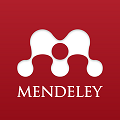PROSPECTIVE ZONE AREA FOR AGRICULTURE AND RESIDENTIAL BASED ON GEOLOGICAL DISASTER POTENTIALS IN SOUTH BANDUNG REGION
Abstract
The number of residents in Bandung continues to increase every year, especially in the southern part of Bandung. The development of residential areas needs to get attention from the local government and people in Bandung, especially to evaluate various geological hazards such as floods, landslide, earthquake, and other. Research methodolgy is qualitative method by interviewing local community and analyzing landsat image using Google Earth and Digital Earth Model (DEM) image to know land use in the research area. In addition, quantitative methods are also used with superimposed manual statistical analysis and weighting methods using Microsoft Excel, Global Mapper, and Mapinfo software. The result of research shows that South Bandung area has Land Suitability Score > 130 (Residential Area) and Land Suitability Score > 135 (Agriculture Area) which are categorized as very good settlement and education area; Land Suitability Score 116-130 (Residential Area) and Land Suitability Score 92-135 (Agriculture Area) are categorized as an obstacle area with various constraints such as water supply, disaster, and others but can still be overcome by artificial engineering. Land Suitability Score <116 (Residential Areas) and Land Suitability Score <92 (Agricultural Area) are limitation area that are not feasible to be used as residential and educational areas, a variety of constraint reduction efforts can be done but require very high cost. Therefore it is suggested to convert the area into conservation. It is concluded that the best areas to be used as residential and agricultural areas are located in the Banjaran District such as Banjaran, Kamasan, Sindangpanon, and Tarajusari Village.
Full Text:
PDF (Bahasa Indonesia)References
Bronto, S. 2006. Stratigrafi Gunungapi Daerah Bandung Selatan, Jawa Barat. Jurnal Geologi Indonesia.
Dai, F.C. and Lee, C.F. 2002. Landslide Characteristics and Slope Instability Modelling Using GIS, Lantau Island, Hong Kong. Geomorphology 42 (2002), Elsevier: 213 - 228.
FAO. 1976. A Framework for Land Evaluation. Soil Bull. No.32. FAO, Rome: Italy, 72 p.
Ramadhan, T.H., Bustomi, Zhafran M.A., Cahyadi, H., Haryanto, E.T. 2016. Risk Analysis And Zonation Of Ground Movement Vulnerability In Garut Regency, West Java, Indonesia. Proceedings Jogja Earthquake in Reflection 2016. Yogyakarta.
Rifai, A. 2017. Perencanaan dan Evaluasi Lahan Pemukiman serta Balai Riset Pertanian Unpad Berdasarkan Analisis Geologi dan Citra Landsat di Kecamatan Baleendah-Arjasari Kabupaten Bandung. Skripsi. Sumedang: FTG Unpad. Unpublished.
Sugandi, D. 2007. Model Penanggulangan Banjir. Jurnal GEA Vol. 7 No. 1 April 2007. Bandung: Jurusan Pendidikan Geografis, FPIPS UPI.
Sulaksana, N., Isnaniawardhani, V., Winantris, Muljana, B., Abdurrokhim., Iskandarsyah, T.Y.W.M., Mulyo, A., Rendra, P.P.R., and Sulastri, M. 2017. Geomorfologi Gunungapi Tua di Wilayah Cekungan Bandung Bagian Selatan. Bandung. UNPAD Press. Indonesia.
Samodra, G., Chen, G., Sartohadi, J., Kasama, K. 2015. Generating Landslide Inventory by Participatory Mapping: An Example in Purwosari Area, Yogyakarta, Java. Geomorphology (2015), http://dx.doi.org/10.1016/j.geomorph.2015.07.035.
Tarigan, A.K.M., Sagala, S., Samsura, D.A.A., Fiisabiilillah, D.F., Simarmata, H.A., Nababan, M. 2016. Cities 50 (2016) 100-110.http://dx.doi.org/ 10.1016/j.cities
Tarigan. 2016. Land Cover Change and Its Impact on Flooding Frequency of Batanghari Watershed, Jambi Province, Indonesia. Procedia Environmental Sciences 33 (2016) 386 – 392, doi: 10.1016/j.proenv. 2016.
DOI: https://doi.org/10.24198/gsag.v3i1.21366
Refbacks
- There are currently no refbacks.
 Journal of Geological Sciences and Applied Geology
Journal of Geological Sciences and Applied Geology





